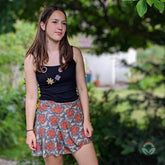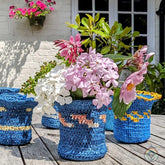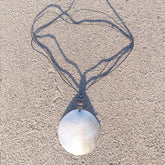The Stories of Things & Why They Matter
Have you ever held something in your hands and truly thought about where it came from? Not just where you bought it, but its full story—the hands that made it, the materials used, the journey it took to reach you? In today’s fast-paced world, we often don’t stop to think about these things. But if we did, might we treat what we have with more respect?
I was reminded of this while reading 'Braiding Sweetgrass' by Robin Wall Kimmerer, particularly the chapter 'Black Ash Basket'. Here, Kimmerer writes about the tradition of basket-making among the Potawatomi people and the deep respect they have for the Black Ash tree. The tree isn’t just a resource—it’s a living being with a story, and that story is honoured in the process of making baskets. The relationship between people and materials is one of reciprocity, not exploitation. When we know the origins of something, we cherish it more.
Learning Respect
This idea resonated deeply with me because I’ve experienced it first hand. Some years ago, I went to live with the Karen hill tribe, where I participated in the full life cycle of rice—from planting to harvesting, threshing, and finally, eating. Before that, rice had just been a staple on my plate, something I could scoop from a bag without much thought. But after witnessing the sheer effort, patience, and respect that goes into growing it, I could never look at rice the same way again. I can’t waste a single grain now. It feels disrespectful to do so.
This experience inspired me to reflect; when we engage with the process behind something, we form a relationship with it.

Planting rice with my Karen friend, Macha.
The Importance of Knowing the Story
This belief is at the heart of Rainbow Life, my small ethical fair trade business. Every product tells a story—of the people who made it, the materials used, and the traditions behind it. When customers know these stories, their relationship with what they buy changes. A handmade basket isn’t just a container; it’s the result of skilled hands, cultural knowledge and natural materials working together. A piece of fabric isn’t just cloth; it starts as a cotton plant, tended by farmers who nurture it through the seasons. The cotton is picked, spun into thread, woven into fabric, and sometimes dyed using traditional techniques passed down through generations. Each step carries the touch of human hands, skill, and care. When we know this, fabric is no longer just something we wear—it’s a story woven from earth, effort, and artistry.
Many of us have become disconnected from the origins of what we consume. It’s too easy to see products as just ‘things’—disposable, replaceable, forgettable. But if we start seeing them as part of a bigger story, we might begin to value them more. We might start to choose more consciously, care more deeply, and waste less.
A Call for Connection
So here’s something to think about: Find one item in your home that you use every day but don’t know much about? Could you learn its story? Who made it? What is it made from? How did it come to be in your hands?
In Braiding Sweetgrass, Robin Wall Kimmerer shares how, after learning about Black Ash basket-making, she could never look at a basket the same way again. The baskets aren't just items for sale—they are stories woven from tree to hand, from ancestor to descendant. That shift in perspective changed everything.
Once we truly see the story behind something, we can’t unsee it. A grain of rice is no longer just food—it’s months of labour, sun, and rain. A piece of fabric is no longer just cloth—it’s a cotton plant nurtured by farmers, spun into thread, woven by skilled hands. The more we ask these questions, the more we move from a mindset of consumption to one of connection. And in that connection, we find respect—not only for the Earth that provides but also for the hands that craft and create.
That’s the kind of world I want to be part of.

Sharing a bowl of rice and chilli with my Karen friends, Nokeche and Sila.












4 Comments
Exactly why I love Rainbow Life, ethics with heart.
nice blog!!
I love shopping at Rainbow Life and am grateful to Lisa for the care she takes to ensure products are ethically sourced and sustainable. Not only that but they are beautiful, richly coloured, of good quality and enduring. I have a range from my much loved shoulder bag made from waste plastic and video tape to skarves made from upcycled saris and fabrics.
The back stories in the website about the products are inspirational
Leave a comment
All blog comments are checked prior to publishing